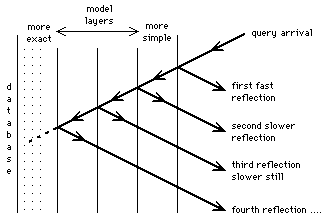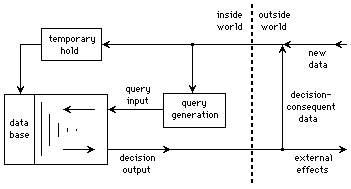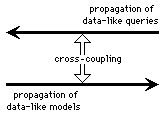
Figure 11: Basic characteristics of the query-reflection structure
It is useful to formulate all incoming response requirements as queries to a central reaction-system. It is evident that a query must receive a suitable response in the time permitted by its context. At one extreme of the range of possibilities is the requirement for IMMEDIATE reaction in the case of imminent system damage. This clearly implies the availability of simple but rapidly-accessible models. Analogously, on finding that a car is about to run you down, it is not very useful to examine all the details of its shape before getting out of the way! At the other extreme of the range is the requirement for highest possible reaction accuracy, for which models close to the database itself are suitable if plenty of time is available to access them.
The multiple query-reflection structure we propose takes account of these possibilities (figure 11).

Figure 11: Basic characteristics of the query-reflection structure
An incoming query is reflected by each encountered model-layer. The first reflection is from a high level simple model involving probably gross approximations. It has the shortest path-length, which enables a rapid response. If sufficient time is available it is possible to wait for the second reflection to be returned, where the more gross approximations will have been split into their constituent parts in order to determine the applicability of these in the current context. An even longer wait-time will result in the appearance of reflection number three, and so on down towards the data level. Prior definition of the necessary penetration depth is not required; it is sufficient to wait as long as is permissible in the current context, at which point the most accurate response in the time available will have been received.
It is questionable whether newly arriving data should be dumped into the central database concurrently with operation of the intermediate zone in a query-reflection mode. An apparently more reasonable solution would be to hold new data temporarily and include it later during a sleep-time, as illustrated in figure 12.

Figure 12: Sleep-time inclusion of new data to avoid query-reflection
interference
This unfortunately leads to a spatially complex untidy structure, and a pseudo-one-dimensional form would clearly be more attractive. Closer examination of the nature of the queries themselves leads to an elegant solution. If the multiple model-layer arrangement is extended outwards into the input region itself, we can describe the situation as an inward propagation of data-like queries and a simultaneous outward propagation of data-like models (figure 13).

Figure 13: Longitudinal counter-propagation of queries and models
Longitudinally, this resembles two cross-coupled counter-propagating
feed-forward
neural networks, where each provides the weighting required for operation of
the other,
and it is pseudo-one-dimensional as desired.
Transverse dimensional effects will be considered later.